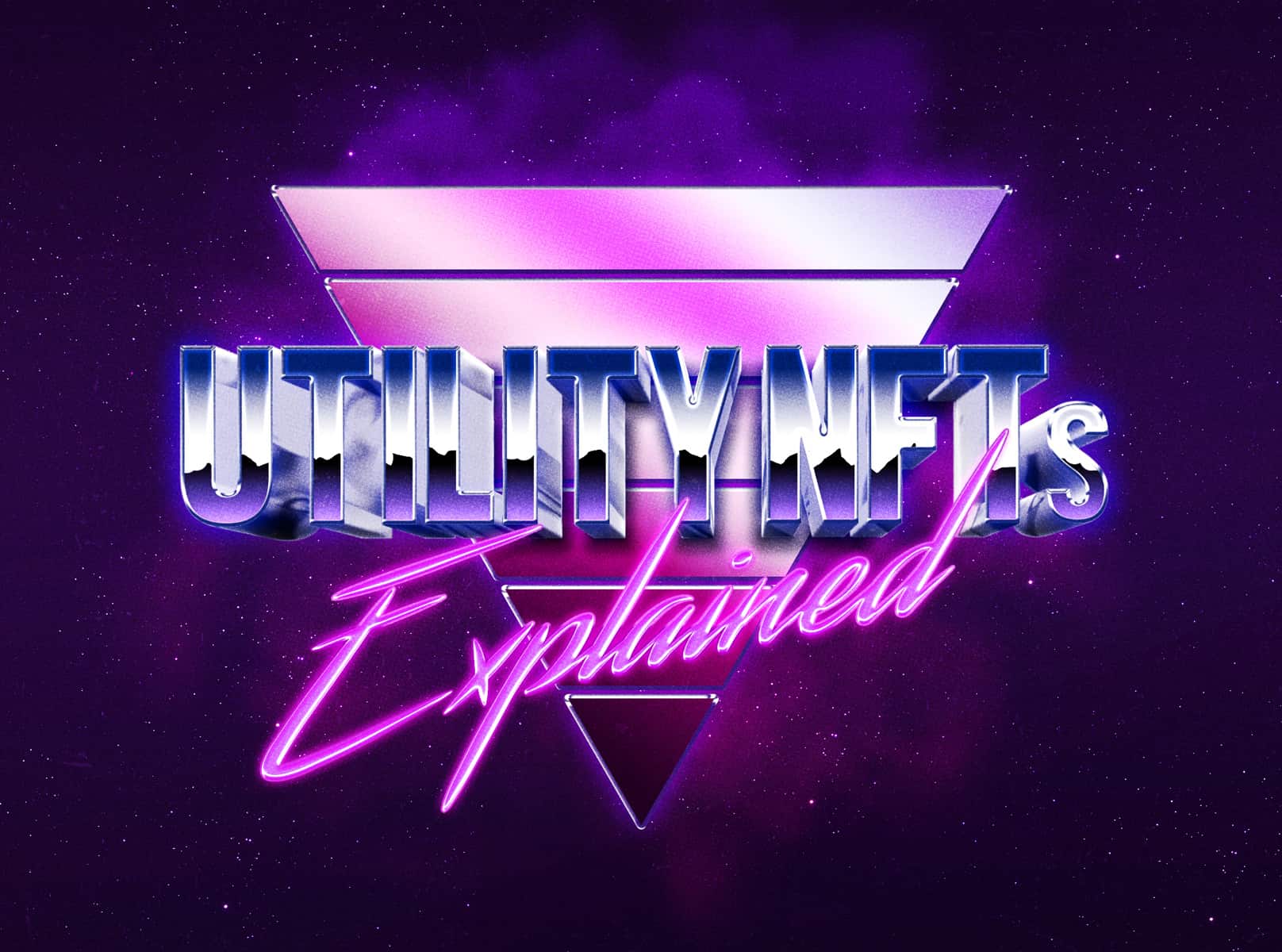This website uses cookies so that we can provide you with the best user experience possible. Cookie information is stored in your browser and performs functions such as recognising you when you return to our website and helping our team to understand which sections of the website you find most interesting and useful.
Table of Contents
You may also interested:
A recent buzzword around web3 is the concept of “utility” in NFTs. Since John Watkinson & Matt Hall created CryptoPunks in 2017, NFTs have only been in the form of digital media. Digital collectibles took the lead in representing NFTs utility, followed by more high-quality artwork such as that of Trevor Jones and Jose Delbo. Soon after, many other digital products such as photos, videos and music began to be listed on NFT marketplaces.
Definition of Utility NFT
The definition of a utility NFT is the simplest one – they are fungible tokens with applications beyond the illustration of unique digital assets. One of the attributes of leading utility NFTs is that they typically supply the privilege of earnings, rewards, or rights to owners, which they would not have had access to generally.
Utility NFT Examples
The NFT space is still in its infancy. The current trend is moving towards “utility” in NFTs, which means that the market is leaning towards NFTs which have a use beyond its mere purchase as a digital product. Let’s take a look at some of these utilities.

- Snoop Dogg and the Food Fighters Universe project will create NFT desserts that will be sold at Bored & Hungry in Los Angeles. Proceeds from the sale of NFT cakes will be used to launch the Dr. Bombay’s & Dogg, which is named after the singer’s NFT token. In this case, the “utility” is for a physical good to be packaged with a digital good and paid for using cryptocurrency. A new term that has been coined in this regard is “phygital” as in “physical + digital”.
- Sandmilk has created a platform where NFTs can be bought and sold without cryptocurrency. A credit card is all that is needed for these transactions. Sandmilk will convert the fiat to cryptocurrency and back again for all transactions. In this case the “utility” is for a digital good to be bought and sold using fiat. Not everyone holds cryptocurrency, so this is a worthy utility as well.
- Casa de Campo Resort & Villas in the Dominican Republic is planning to sell hotel bookings, cancelled bookings, specifically as “room night tokens” (RNTs). Guests who cancel their bookings will be given “store credit” in the form of RNTs which they can choose to hold on to, or to resell. The utility in this case is a real world service packaged as a digital product. It is not clear as to whether the transactions will be in fiat or cryptocurrency.
- Yuga Labs, the creator of Bored Ape Yacht Club and Mutant Ape Yacht Club require the purchase of an NFT to gain entry into Ape Fest 2022. They will use the TokenProof App to verify ownership at the gates to the festival. The utility in this case is a real world event being gated by the ownership of a digital good. People who do not as yet have a BAYC or MAYC NFT would have to make a purchase prior to the event.
- WWF UK was planning to sell a collection of NFTs entitled Tokens for Nature, with proceeds going towards animal care and conservation. In this case, the utility of the NFT lay in its social cause.
- Pearpop, a social media collaboration marketplace, is planning to merge web2 and web3 technologies together by allowing social media content creators to mint NFTs out of their social media posts. In this case, the utility is having an automation link between web2 and web3.
- Axie Infinity, a web3 game, sells game characters as NFTs. In this case, the utility is the ability of the buyer to use that game character in the game, instead of just being a digital product. Other web3 games have followed suit, including games such as Zoofrenz Apefrenz.
- The Buster Show, a podcast, sells “utility mics” which can be redeemed to access episodes of the podcast before they go live, access to in person podcast related events when possible and rights to use the mic on the buyer’s own merch or make clothing.
So are these utility NFTs all that they’re cracked up to be? Not always. There are pros and cons to utility NFTs.
Utility NFT Pros
- Utility NFTs make the NFT space more accessible. Not everyone has crypto. Not everyone is knowledgeable about the web3 space. Some are even sceptical about it. Even the Wolf of Wallstreet Jordan Belfort was, in the past. Utility NFTs make that space more accessible by bringing in either fiat or the real world. People will tend to see the bridge and will consequently become more willing to embrace it.
- Utility NFTs make the purchase of NFTs more worthwhile. Detractors of the NFT space have been talking about this for a while now, sometimes in harsh tones. Reducing NFTs to mere frivolity, they express disbelief at how “cartoons” of apes can be sold at such high prices. Of course, they think that it is not worth the money to spend on just a digital image. Providing other utilities along with the image makes it more worthy as a purchase to them.
- Utility NFTs make NFT communities more engaged. The success of NFTs lies in the communities they create. Communities must be built before NFT drops. Communities must continue to be engaged after the first public mint. Otherwise, those who bought your NFTs might sell them soon after, causing the value to drop considerably. When engaging communities, NFT creators often use digital tools such as Jomija as a Microverse or even a simple game over Sketchful. But there is a limit to how engaging these digital tools can be. Many web3 enthusiasts still need real world connections and physical goods. These utilities can make the interaction in the community more engaging for the long term.
Utility NFT Cons
- Utility NFTs are not good for resale and investment. If you’re looking for investment opportunities with NFTs, you will be using several metrics to assess whether an NFT is suitable for investment. You will be looking for data to show value appreciation over a period of time to give you an indication of the investment and resale potential of that NFT collection. However, utility NFTs which tend to be resold on the secondary market are mostly those which are not real world utility. Game NFTs tend to be bought and sold because they can be used by the next owner in the game as well. Real world NFTs do not have much resale value because the physical items that come with the NFTs may have already been consumed by the first owner. Furthermore, there is no obligation for the first owner to include the physical item with the resale of that NFT.
- Utility NFTs are not covered under the on-chain smart contract. This point follows from the earlier point. There is indeed no obligation for the first owner to include the physical item with the resold NFT. This is not governed by the smart contract, so there is nothing binding the physical item to the digital item sold as NFT. This is especially so for the smart contracts that sit on the blockchain.
- Utility NFTs may turn off web3 enthusiasts. Web3 enthusiasts can be a teeny weeny bit elitist. Nothing wrong with that. Bitcoin was created as a response to the 2008 financial crisis as a means to get around centralised financial systems. Web3 enthusiasts embraced this new decentralised systems and were quite happy to keep the community tight. Utility NFTs are bringing NFTs closer to the mainstream. This may not bode well with the web3 enthusiasts because the very genesis of web3 was to break away from the mainstream in order to avoid its financial pitfalls.
Final Thoughts on NFT Utility
If you’re an NFT content creator or marketer, do think about creating utility in your NFTs. Even if you’ve had a collection for a while and didn’t have utility at the start, you can always build utility now. Create utility for existing owners of your NFTs. You can always verify their ownership using the Collab.land bot on Discord or the TokenProof app in real life.
If you’re an NFT investor, avoid utility NFTs for now. At the time when this article is being written, their resale value is questionable, at least with the current technology that is used to govern their utility portions.





